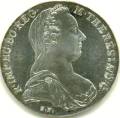Wednesday, August 4
Salt to Thalers to Birr
The basic unit of Ethiopian currency is called the Birr. Today a dollar is worth about 8.64 Birr. Numerous forms of tender legal and otherwise have been used over time including
The costly war between Eritrea and Ethiopia that began in 1998 was given impetus by tensions over currency issues and trade. In a nutshell, the government (of the former Ethiopian province) of Eritrea felt entitled to an indefinite portion of Ethiopian economic activity because of its role in the overthrow of the former Marxist military dictatorship.
The new Ethiopian government, controlled by the erstwhile partners of the Eritrean government, came to see its own interests in total self rule and economic independence. Therefore, they went to the mattresses over their respective cuts of the action - tragically there were millions of innocents caught in the crossfire.
From Africa Watch on the economic aspects of the war
The silver Talari was introduced in 1893 as a substitute for the Maria Theresa Thaler, which was the main medium of exchange in Ethiopia in the 1800s and 1900s. Ethiopia issued banknotes in Thalers from the Bank of Abyssinia from 1915 until 1932, and from the Bank of Ethiopia from 1932 until 1936 when Italian authorities recalled all the banknotes. Transactions were also carried out in French Francs.The transition from dollar to birr in 1976 was motivated in part by the 'revolutionary' spirit of the Marxist military dicatatorship. The dollar was so named in an effort to declare economic and fiscal independence from the U.K. during and after the Second World War.
When Ethiopia was incorporated into Italian East Africa, the Italian East Africa Lira was introduced at par with the Italian Lira. After Ethiopia was liberated from the Italians in April 1941, the British administered the monetary affairs of Ethiopia during the war and introduced the East Africa Shilling into the country. Egyptian Pounds were also in use, though they were phased out in the 1940s. Maria Theresa Thalers, Indian Rupees and the British Pound Sterling were also legal tender under British administration.
On July 23, 1945, the Ethiopian Dollar was introduced. The Ethiopian Dollar became the sole legal tender on October 1, 1952 when Eritrea was incorporated into Ethiopia. On September 21, 1976, Ethiopia replaced the Ethiopia Dollar with the Ethiopia Birr at par.
The costly war between Eritrea and Ethiopia that began in 1998 was given impetus by tensions over currency issues and trade. In a nutshell, the government (of the former Ethiopian province) of Eritrea felt entitled to an indefinite portion of Ethiopian economic activity because of its role in the overthrow of the former Marxist military dictatorship.
The new Ethiopian government, controlled by the erstwhile partners of the Eritrean government, came to see its own interests in total self rule and economic independence. Therefore, they went to the mattresses over their respective cuts of the action - tragically there were millions of innocents caught in the crossfire.
From Africa Watch on the economic aspects of the war
In 1997, Eritrea introduced its own currency, the nakfa, which it wanted to trade at parity with the Ethiopian birr. Eritrea also insisted that, internationally, the nakfa would be allowed to float. After long deliberation, the Ethiopian government rejected the proposed linkage of the two units and, from October 1997, required that all trade transactions in excess of US $250 between the two countries are to be conducted in hard currency.Still in limited use in rural Ethiopia is the Maria Theresa Thaler
The nakfa consistently trades at lower rates than the birr, which implies falling wage rates for migrants from Tigre. All of this erodes household incomes, causing considerable stress. On both sides, the animosity generated by the hardships caused by this series of policy changes was considerable and created a reservoir of public anger to be directed at whichever of the two governments was identified as the responsible party.
(It) (dollar) has served as a trade dollar world wide for 226 years. Initially minted in 1782 this dollar-sized coin has served as the only coin in many near countries and even still used today in some places. It was one of the silver coins used in the early United States along with the Spanish dollar and other European dollar sized coins.The National Bank of Ethiopia has a fine page on the history of money and banking in Ethiopia.
Maria Theresa Thaler
Maria Theresa, the daughter of Charles VI, the last Hapsburg ruler of the Holy Roman Empire, was born in 1718. When she was 19, Maria Theresa married Francis Steven, Duke of Lorraine. Crowned Empress of Austria and Queen of Hungary and Bohemia in 1745 when her husband was crowned Holy Roman Emperor, Maria Theresa had 16 children, 11 daughters. She died in 1780.
salt served as a principal item of exchange in Ethiopia for over one thousand years. Salt was not merely a kitchen commodity but also a medium of exchange in larger scale transactions. The salt bar used as a medium of exchange in Ethiopia was called "guela" in Tigrigna, amole in Amaharic and its common name was "(c)hew" which means salt both in Aamharic and Tigrigna.The ancient Kings of Axum also minted coins
No one knows the exact time when minting of coins started in Axum. Some Archeologists endorse the view that Endybis was the first king to introduce gold coins in his name around the third century (.227-235 A.D.). The second king to strike similar coins also in his name was Aphilas. The coins bearing the image of kings Endybis and Aplilas are among the evidence that pre Christian Ethiopia had her own currency. After Endybis and Applials each succeeding Axumite sovereign introduced his own coins with his image and insignia.








